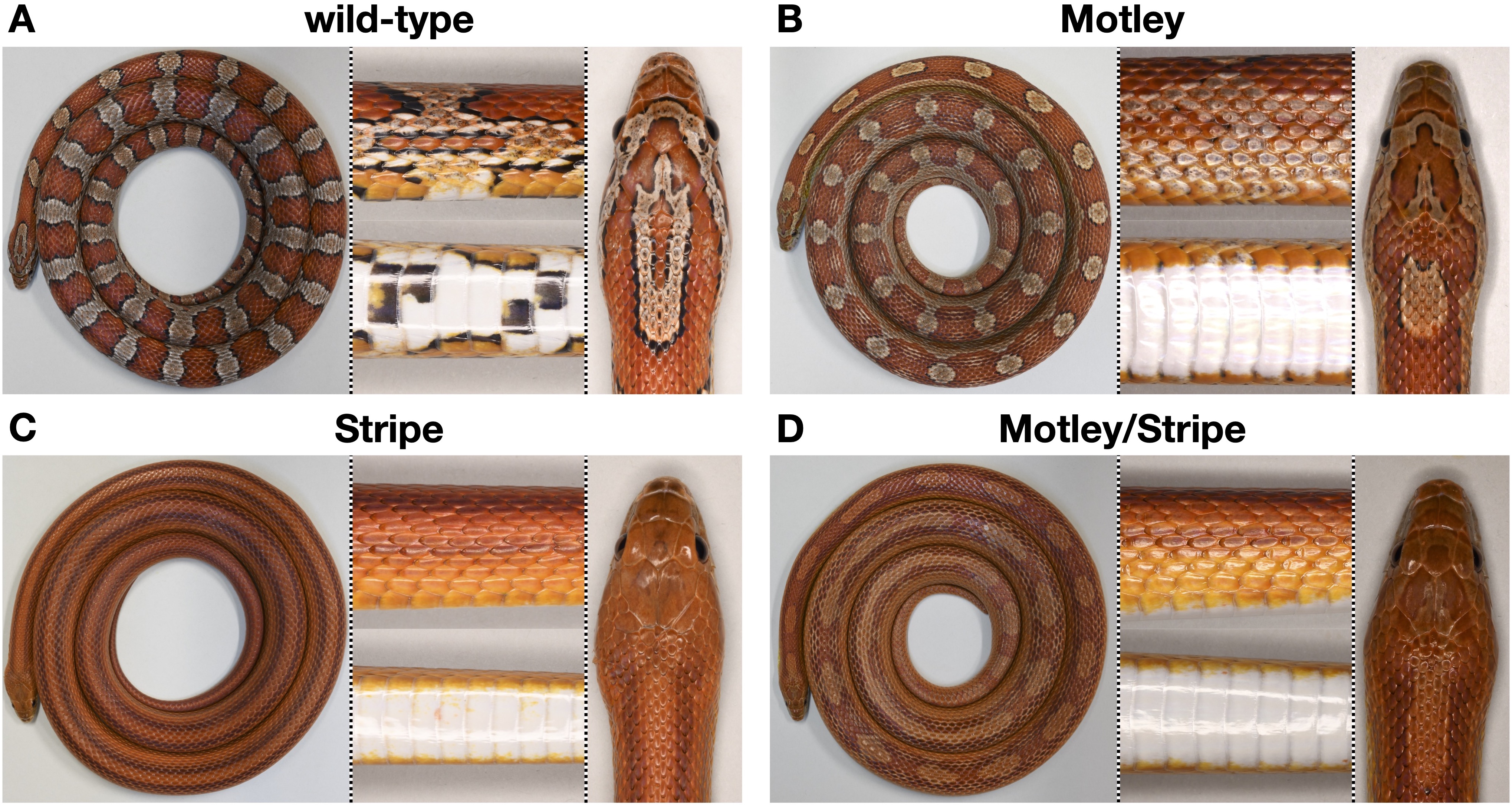Snakes exhibit a broad variety of adaptive colors and color patterns but little is known of the mechanisms responsible for these spectacular traits. In our new study published this week in Genome Biology, we use mapping-by-sequencing and identify a single locus with two recessive alleles that cause skin color pattern aberrations in the corn snake.
First, using differential gene expression analyses, we find that the CLCN2 (Chloride Voltage-Gated Channel 2) gene is significantly down-regulated in the embryonic skin of snakes of the so-called 'Motley' phenotype, i.e., individuals with (i) abnormally-elongated dorsal blotches that tend to fuse, especially at the anterior part of the body, (ii) highly reduced lateral blotches and (iii) uniformly white ventral scales instead of the wild-type black and white checkered pattern.
Second, we find that an insertion of an LTR-retrotransposon in the same CLCN2 gene, results in a disruptive mutation of the corresponding protein and causes the so-called 'Stripe' phenotype, i.e., dorsal and lateral blotches of the wild type are replaced by four dark stripes and the ventral scales are also uniformly white as in Motley individuals.
Third, we confirm the involvement of CLCN2 in color patterning by producing knock-out snakes that present a phenotype similar to Stripe.

Fig. 1: Color pattern of wild-type, Motley, Stripe, and Motley/Stripe corn snakes. (A) The wild-type pattern consists of dorsal and lateral blotches and black and white ventral checkers. (B) Motley individuals present elongated dorsal blotches that tend to fuse, especially at the anterior part of the body, with highly reduced lateral blotches and white ventral scales. (C) In Stripe individuals, the dorsal and lateral blotches are replaced by four stripes and the ventral scales are also white. Both the motley (mm) and stripe (ms) alleles are fully recessive to the wild-type allele: mm/ + and ms/ + individuals exhibit a wild-type phenotype as in panel A. (D) The phenotype of most mm/mm animals is intermediate, combining fused blotches and stripes.
In humans and mice, disruption of CLCN2 results in the degeneration of the brain white matter as well as of the retina and testes. Our single-cell transcriptomic analyses in snakes reveal that CLCN2 is indeed expressed in chromatophores during embryogenesis and in the adult brain, but we observe no impact on the behavior and fertility of Motley and Stripe corn snakes.
Overall, our genomic, transcriptomic, and functional analyses identify the plasma membrane anion channel CLCN2 to be involved in color pattern development in snakes and show that an active LTR-retrotransposon might be a key driver of trait diversification in corn snakes.
Much additional information is available in the original article:
Regulatory and disruptive variants in the CLCN2 gene are associated with modified skin color pattern phenotypes in the corn snake
Montandon, Beaudier, Ullate-Agote, Helleboid, Kummrow, Roig-Puiggros, Jabaudon, Andersson, Milinkovitch & Tzika
Genome Biology 26, 73 (2025) — https://doi.org/10.1186/s13059-025-03539-0